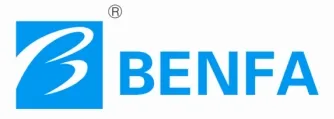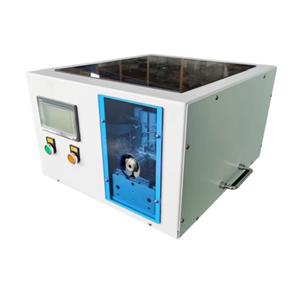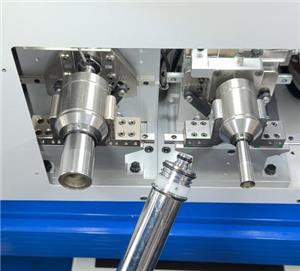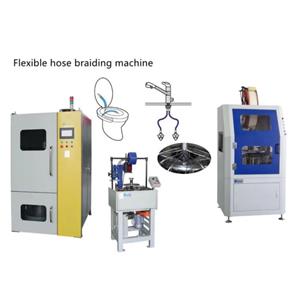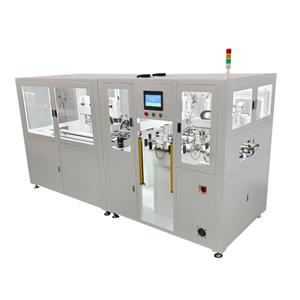Advanced Hose Braiding Machine Redefines Flexible Hose Manufacturing
Introduction
In the rapidly evolving landscape of industrial machinery, one product stands out for its ability to seamlessly merge technology, efficiency, and durability—the hose braiding machine. As industries around the world demand higher performance and reliability in hose production, this machine has become a symbol of innovation and engineering excellence. From domestic plumbing to heavy-duty industrial applications, the hose braiding machine delivers consistent quality, operational efficiency, and unparalleled flexibility, making it an indispensable asset for modern manufacturing.
This article provides an in-depth look at the hose braiding machine, covering its design philosophy, technical features, benefits, applications, and future potential. With more than 2500 words dedicated to exploring every aspect of the machine, the goal is to highlight how this technology reshapes hose manufacturing and supports businesses aiming to lead in a highly competitive market.
Evolution of Hose Manufacturing
Traditional Methods vs. Modern Braiding Technology
Before the advent of automated braiding machines, hose reinforcement processes relied heavily on manual labor or semi-automatic systems. These methods often led to inconsistencies in braiding patterns, variations in tension, and uneven durability across different sections of the hose. Such flaws increased failure rates, maintenance costs, and risks in end-user applications.
The hose braiding machine revolutionized this process by introducing precise wire control, synchronized movements, and automated tension systems. The result is a consistently braided structure, providing enhanced flexibility and strength in every hose produced.
Rising Global Demand
The demand for reinforced hoses continues to grow in sectors such as construction, automotive, aerospace, chemical processing, and domestic utilities. As performance requirements increase—particularly for high-pressure and chemically resistant hoses—manufacturers must adopt advanced machinery to stay competitive. The hose braiding machine addresses this demand directly, ensuring that output meets international safety and quality standards.
Technical Features of the Hose Braiding Machine
1. Robust Mechanical Framework
The foundation of the hose braiding machine is its heavy-duty frame, designed to minimize vibration and enhance stability during high-speed operation. The robust construction ensures long-term reliability, even under continuous use in demanding industrial settings.
2. Advanced Control System
At the heart of the machine is a digital control panel with a user-friendly interface. Operators can easily adjust speed, braiding density, and wire tension. The touch-screen interface reduces learning curves and ensures that even new operators can quickly achieve consistent production results.
3. Precision Tension Regulation
One of the defining features of the hose braiding machine is its advanced wire tension control system. Each strand of wire or fiber is regulated independently, guaranteeing uniform braiding patterns. This eliminates weak spots and ensures hoses meet strict performance standards.
4. High-Speed Performance
The machine is capable of high-speed operation without compromising accuracy. It achieves remarkable output rates, making it suitable for large-scale production facilities while retaining the flexibility needed for smaller, customized orders.
5. Versatile Material Compatibility
The hose braiding machine is engineered to work with a wide range of materials, including:
Stainless steel wire
Copper wire
Synthetic fibers (nylon, polyester)
Composite materials
This versatility enables manufacturers to cater to diverse industries and applications, expanding their market opportunities.
6. Energy Efficiency and Sustainability
With its energy-efficient motor and optimized drive systems, the machine consumes less power while maintaining maximum productivity. This not only reduces operating costs but also aligns with the growing push for sustainable manufacturing practices.
Applications of the Hose Braiding Machine
Domestic Applications
Kitchen Faucets and Shower Hoses: The machine produces hoses with smooth flexibility and strong reinforcement, ensuring long service life.
Home Appliances: Washing machines, dishwashers, and water heaters benefit from braided hoses designed to handle continuous use.
Industrial Applications
Hydraulic Systems: High-pressure hoses that power machinery rely on precise braiding for strength and safety.
Chemical Transport: Braided hoses resistant to corrosion and high temperatures are critical in chemical plants.
Construction Equipment: Durable hoses withstand tough conditions on construction sites, where reliability is essential.
Automotive Applications
Brake Systems: Safety-critical brake hoses require exacting standards met by advanced braiding machines.
Fuel Lines: Flexible yet durable fuel hoses support the efficiency of modern vehicles.
Cooling Systems: Braided hoses ensure resilience against heat and fluid pressure.
Aerospace and Specialized Industries
In sectors where precision and safety are paramount, the hose braiding machine produces hoses that meet rigorous certification standards. Aerospace fuel and hydraulic systems, for example, demand unparalleled reliability—something only high-precision braiding technology can deliver.
Advantages for Manufacturers
Consistent Quality – Every hose is produced with the same structural integrity, reducing rejection rates and warranty claims.
Increased Productivity – High-speed operation allows manufacturers to meet growing global demand efficiently.
Cost Savings – Energy-efficient systems lower operating costs, while reduced maintenance minimizes downtime.
Enhanced Competitiveness – By producing hoses that meet international standards, manufacturers can expand into global markets.
Ease of Operation – With automated systems and digital controls, training requirements are minimal, making the machine accessible to diverse workforces.
Future Trends in Hose Manufacturing
Smart Manufacturing Integration
The next generation of hose braiding machines will increasingly integrate IoT technology and AI-driven monitoring systems. This will allow real-time tracking of machine performance, predictive maintenance, and automated quality control, pushing productivity even higher.
Sustainability and Green Manufacturing
Environmental regulations are becoming stricter, and customers demand eco-friendly solutions. Hose braiding machines will continue to evolve with energy-saving motors, recyclable materials, and reduced waste processes.
Customization and Flexibility
Manufacturers are moving away from one-size-fits-all production models. The demand for customized hoses—whether in size, material, or performance—requires machines capable of rapid adjustments. The hose braiding machine is already designed with this flexibility in mind.
Market Impact
The adoption of hose braiding machines directly impacts multiple industries:
For manufacturers, it means greater productivity, reduced costs, and enhanced competitiveness.
For end-users, it translates into safer, more reliable, and longer-lasting hoses.
For markets, it represents a shift toward advanced, technology-driven solutions that support global growth.
Conclusion
The hose braiding machine is more than just a piece of industrial equipment—it is a strategic investment for companies aiming to stay ahead in a rapidly evolving market. With its combination of speed, precision, versatility, and sustainability, it redefines what is possible in hose manufacturing.
As industries demand higher standards and as technology continues to advance, the hose braiding machine will remain at the forefront of innovation, ensuring that every hose produced is not only functional but also reliable, durable, and future-ready.
